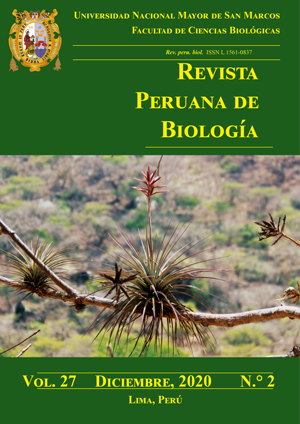Physeteroidea (Cetacea: Mammalia) hyper-diversification from late Miocene of South Pacific, new fossils from the Sacaco area, Arequipa, Peru
DOI:
https://doi.org/10.15381/rpb.v27i2.16507Keywords:
Physeteridae, cetaceans, odontocetes, fossils, Pisco FormationAbstract
Sperm whales (Physeteroidea) are a group of cetaceans with a restricted modern ecology. The three extant species are a remnant of a group that reached its diversity peak during the Miocene, including five already-described species from the Pisco Formation, Ica-Arequipa, Peru. We report two isolated teeth from the upper Miocene localities of Sacaco and Sud-Sacaco, which correspond with the typical morphology of Physeteridae. This morphology is similar to the one present in northern hemisphere taxa as Orycterocetus or Aulophyseter. Because of this the remains could be related to physeterids with piscivorous habits, so there would not be a niche overlap with other coeval sperm whales. This new registry expands the fossil cetacean community of Sacaco, which was favored by the great diversity of shallow environments that dominated the Peruvian coast until the final establishment of the Humboldt System.
Downloads
Downloads
Published
Issue
Section
License
Copyright (c) 2020 Aldo Benites-Palomino, Mario Urbina

This work is licensed under a Creative Commons Attribution-NonCommercial-ShareAlike 4.0 International License.
AUTHORS RETAIN THEIR RIGHTS:
a. Authors retain their trade mark rights and patent, and also on any process or procedure described in the article.
b. Authors retain their right to share, copy, distribute, perform and publicly communicate their article (eg, to place their article in an institutional repository or publish it in a book), with an acknowledgment of its initial publication in the Revista Peruana de Biologia.
c. Authors retain theirs right to make a subsequent publication of their work, to use the article or any part thereof (eg a compilation of his papers, lecture notes, thesis, or a book), always indicating its initial publication in the Revista Peruana de Biologia (the originator of the work, journal, volume, number and date).






